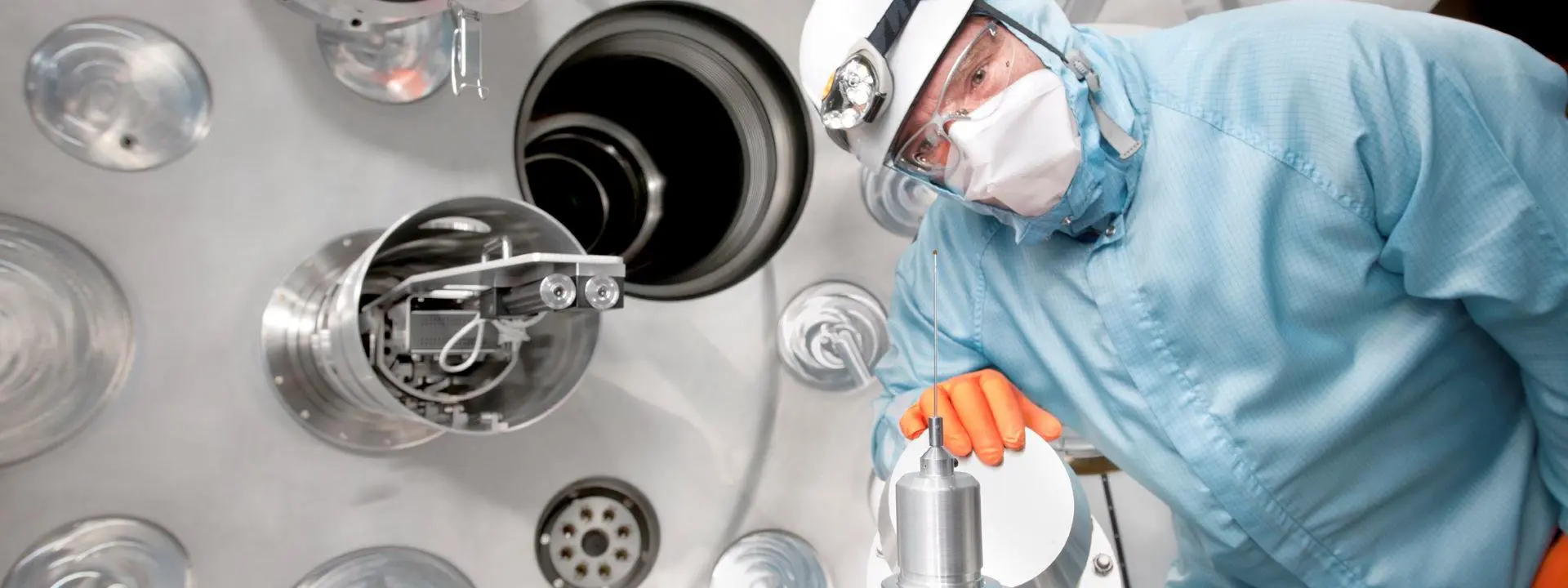Building innovation: An awesome partnership driving industry solutions

The challenge
AWE is responsible for manufacturing and maintaining the UK's nuclear warheads, which are carried on board Trident nuclear submarines as part of Continuous At-Sea deterrence. The nuclear deterrent forms a key part of the UK Government's security and defence policies. AWE also uses its nuclear know-how and technical expertise to provide innovative solutions that support the UK's counterterrorism and nuclear threat reduction activities.
Since signing the Comprehensive Nuclear-Test-Ban Treaty (CTBT) in 1996, the UK cannot carry out underground tests to collect data about the safety and performance of its warheads. Instead, AWE needed to develop alternative ways to gather data about the operation and safety of designs, systems, components, and materials.
Collecting that data involves working on cutting-edge science and computational methodologies to measure and verify the safety and effectiveness of the nuclear warhead stockpile, without recourse to live testing.
The solution
AWE formed a strategic alliance with Heriot-Watt University to develop and deploy sensors to gather data about its nuclear warheads. Heriot-Watt developed optical sensors that allowed gaps and shapes to be mapped, gases to be detected, and systems to be integrated.
Heriot-Watt used optical fibres to shine rays of light into complex structures and hazardous environments to detect gaps and shapes. The university's research led to the development of technology that underpinned a series of critical engineering trials, which otherwise could not have been performed.
The university also developed sensors to detect traces of gases and allow continuous monitoring during tests. The complex environment and constraints on sensors meant that the measurements could not be taken using existing technology.
Finally, Heriot-Watt's innovative manufacturing processes allowed optical fibres to be embedded into polymers. This process allowed optical fibres and sensors to be built into composite materials that AWE can then use in its engineering activities.
The impact
AWE has described the partnership as invaluable and that the unique optical sensors and integrated hardware developed during the projects could not be matched by commercially available devices. The organisation believes the in situ measurements it made using the sensors during its engineering trials would have been impossible to obtain by any other means.
Dr Scott McCulloch, Deputy Head of Materials and Analytical Science at AWE, said: “Heriot-Watt has not only been excellent at transferring the sensor technology into AWE – and helping us to move into the optical sciences – but has also extended the knowledge of our team. We now have people who have postdoctoral level skills, who can develop, test, and calibrate sensors, and make the instruments and systems to use those sensors. That relationship continues – we currently sponsor three PhD students at the University through the Centre for Doctoral Training in Applied Photonics. When I look back on my career, working with Heriot-Watt has been one of the highlights.”
Dr Richard Carter, Associate Professor in the Applied Optics and Photonics Group at Heriot-Watt University, added: “Working with AWE has allowed us to explore real-world applications for our research. The solutions that we've developed are truly novel – there would be no way to replicate the results using commercially available equipment. Our ongoing partnership with AWE has also created many opportunities for our doctoral students, with one of our Doctor of Engineering students working on AWE projects now.”
The legacy
Researchers are using expertise they developed during AWE focussed projects and are applying their knowledge and experience to a wide variety of areas. As well as the ongoing work with AWE, the University is now looking at applications for its sensors in the field of medicine.
Dr Carter said: “The work that we did with AWE to embed optical fibres into polymers – so that they can be built into composite materials – has a wide variety of industrial applications. We're now exploring other uses for the technology by pivoting it into other areas.”
AWE is also exploring ways to work with the National Robotarium at the University on topics including artificial intelligence, automation, and robotics. Senior members of staff from the establishment visited the National Robotarium's new facility in 2022 ahead of its official opening.
UK Ministry of Defence © Crown owned copyright 2023/AWE
Contact
Policy, Strategy and Impact (PSI)
- PSI@hw.ac.uk